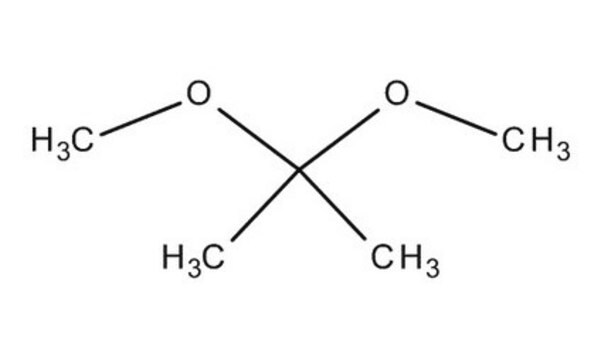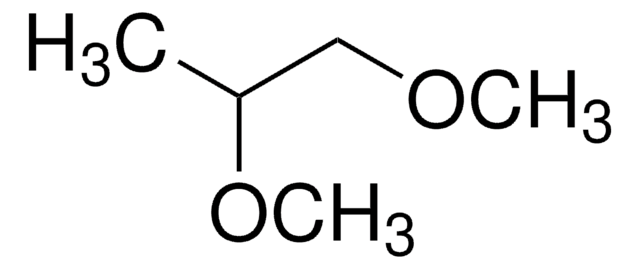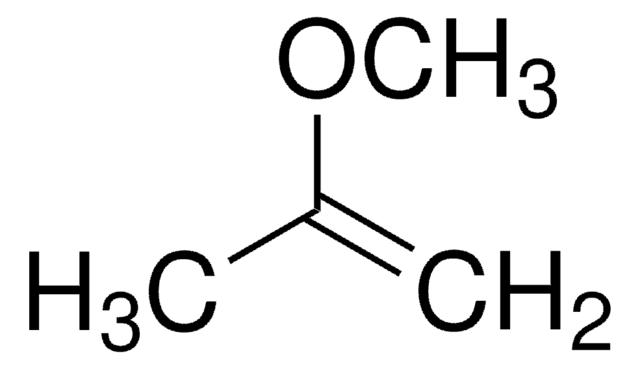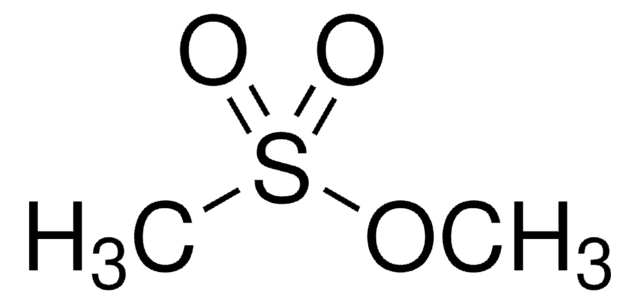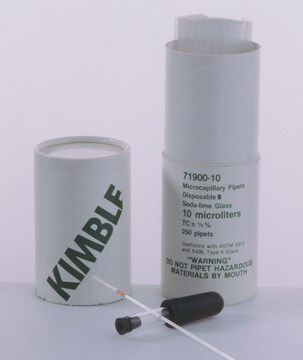73137
2,2-Dimethoxypropane
analytical standard
Sinónimos:
Acetone dimethyl acetal
About This Item
Productos recomendados
grado
analytical standard
Nivel de calidad
densidad de vapor
3.59 (vs air)
presión de vapor
60 mmHg ( 15.8 °C)
Ensayo
≥99.4% (GC)
caducidad
limited shelf life, expiry date on the label
lim. expl.
31 %, 58 °F
6 %, 27 °F
técnicas
HPLC: suitable
gas chromatography (GC): suitable
índice de refracción
n20/D 1.378 (lit.)
n20/D 1.378
bp
79-81 °C
83 °C (lit.)
densidad
0.847 g/mL at 25 °C (lit.)
aplicaciones
environmental
Formato
neat
cadena SMILES
COC(C)(C)OC
InChI
1S/C5H12O2/c1-5(2,6-3)7-4/h1-4H3
Clave InChI
HEWZVZIVELJPQZ-UHFFFAOYSA-N
¿Está buscando productos similares? Visita Guía de comparación de productos
Descripción general
Aplicación
Palabra de señalización
Danger
Frases de peligro
Consejos de prudencia
Clasificaciones de peligro
Eye Irrit. 2 - Flam. Liq. 2 - Skin Irrit. 2
Código de clase de almacenamiento
3 - Flammable liquids
Clase de riesgo para el agua (WGK)
WGK 2
Punto de inflamabilidad (°F)
14.0 °F - closed cup
Punto de inflamabilidad (°C)
-10 °C - closed cup
Equipo de protección personal
Eyeshields, Faceshields, Gloves, type ABEK (EN14387) respirator filter
Elija entre una de las versiones más recientes:
¿Ya tiene este producto?
Encuentre la documentación para los productos que ha comprado recientemente en la Biblioteca de documentos.
Los clientes también vieron
Nuestro equipo de científicos tiene experiencia en todas las áreas de investigación: Ciencias de la vida, Ciencia de los materiales, Síntesis química, Cromatografía, Analítica y muchas otras.
Póngase en contacto con el Servicio técnico
